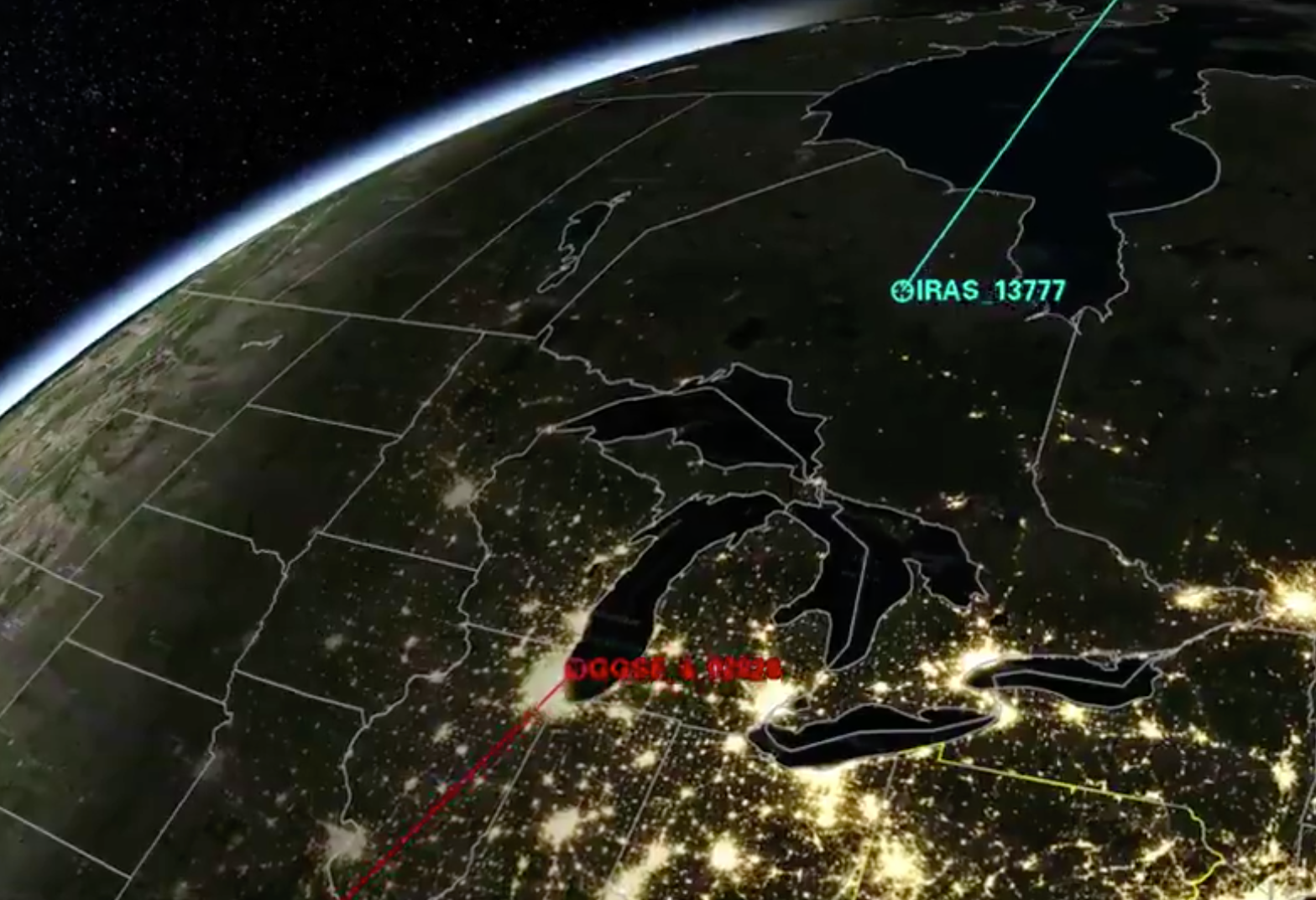Two satellites hurtling across sky at 33,000mph in close collision over Pittsburgh
Decommissioned spacecraft do not collide, sparing threat of thousands of new pieces of space debris

Two defunct satellites travelling at roughly 33,000 mph had an “alarming” chance of colliding in orbit in the skies above the skies on Pittsburgh, but narrowly missed each other.
On Monday, LeoLabs, a California company that tracks space debris in low earth orbit, announced it was tracking the two decommissioned spacecraft. It said there was a chance they could hit at 6.39pm local time on Wednesday.
One was the Infrared Astronomical Satellite (IRAS), a space telescope that was a joint mission between Nasa, the Netherlands and the UK. It ran out of fuel in November 1983.
The second, GGSE-4, was an experimental US payload launched in May 1967 by the US Air Force.
If there had been a collision they could potentially create thousands of pieces of new space debris.
There were many factors at play, so it was difficult to assess whether they could collide or have a relative near miss. It was predicted they would come within 12 metres (40 feet) of each other.
The probability of a collision had been higher due to the size of IRAS at 3.6 metres across, and because GGSE has an 18 metre boom deployed.
But a satellite"ham", Robert Dixon, reported he had watched as they passed. "No collision seen between the IRAS satellite and GGSE 4. I had perfect viewing conditions and was able to visually observe IRAS, but no collision from what I could tell," he tweeted.
Analytical Graphics had a simulation of the two satellites approaching each other more than 550 miles above Pennsylvania.
On Wednesday morning LeoLabs tweeted: “Though it is still unlikely that these objects will collide, we have tasked our radars to schedule longer duration tracking on both objects following the event to search for evidence of any new debris (and hopefully not find any!)”
The company also said: “Events like this highlight the need for responsible, timely deorbiting of satellites for space sustainability moving forward.”
Join our commenting forum
Join thought-provoking conversations, follow other Independent readers and see their replies
Comments